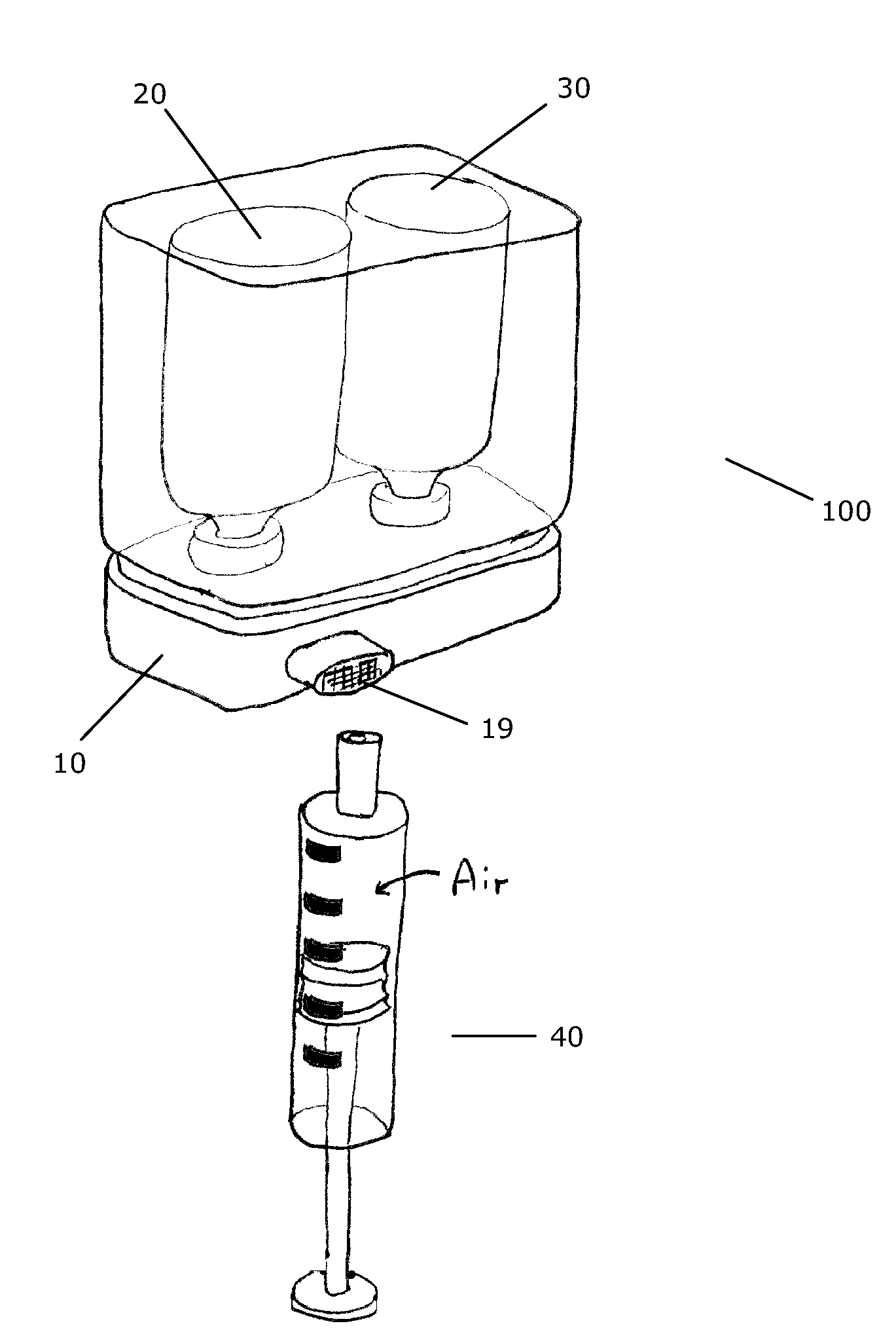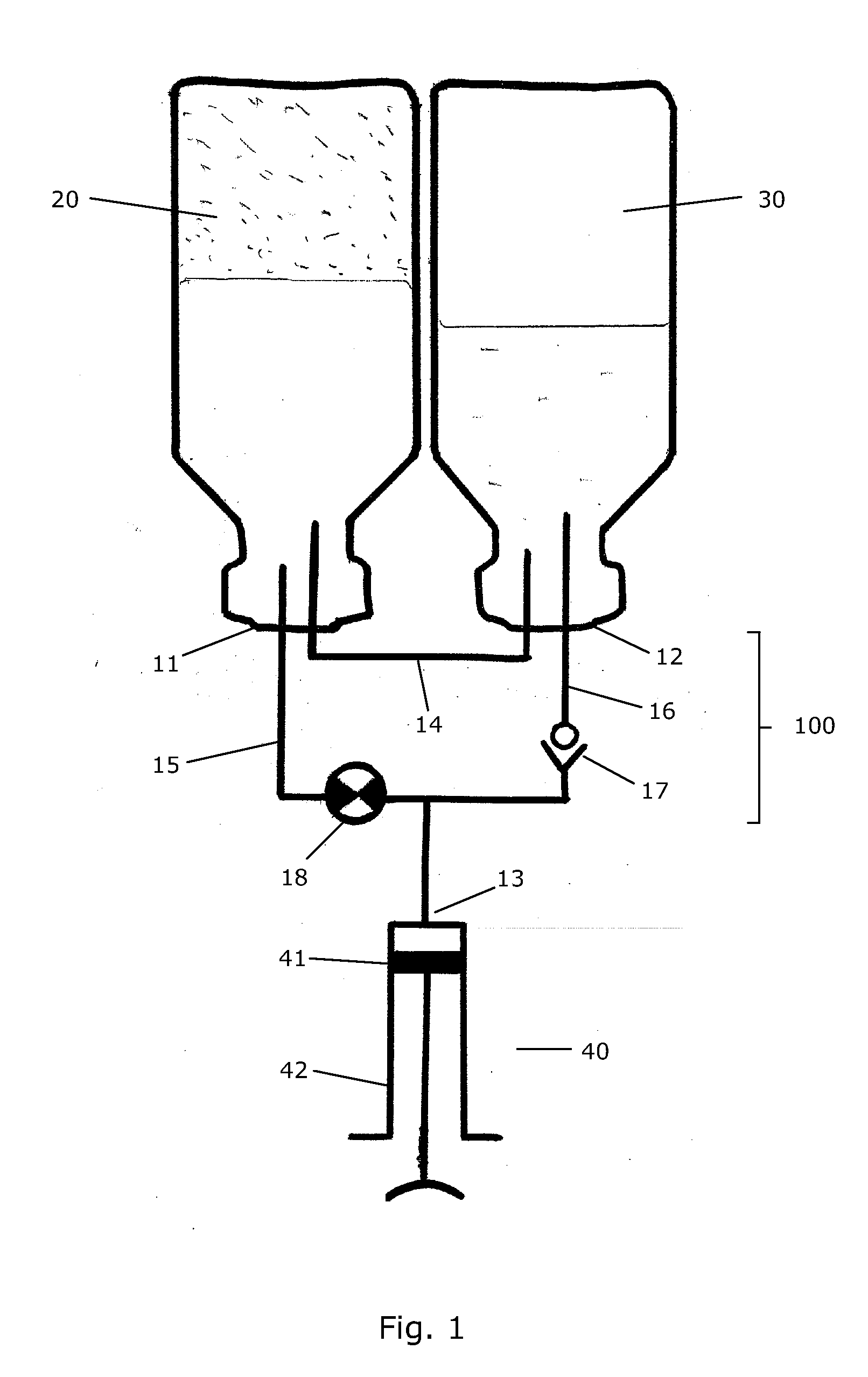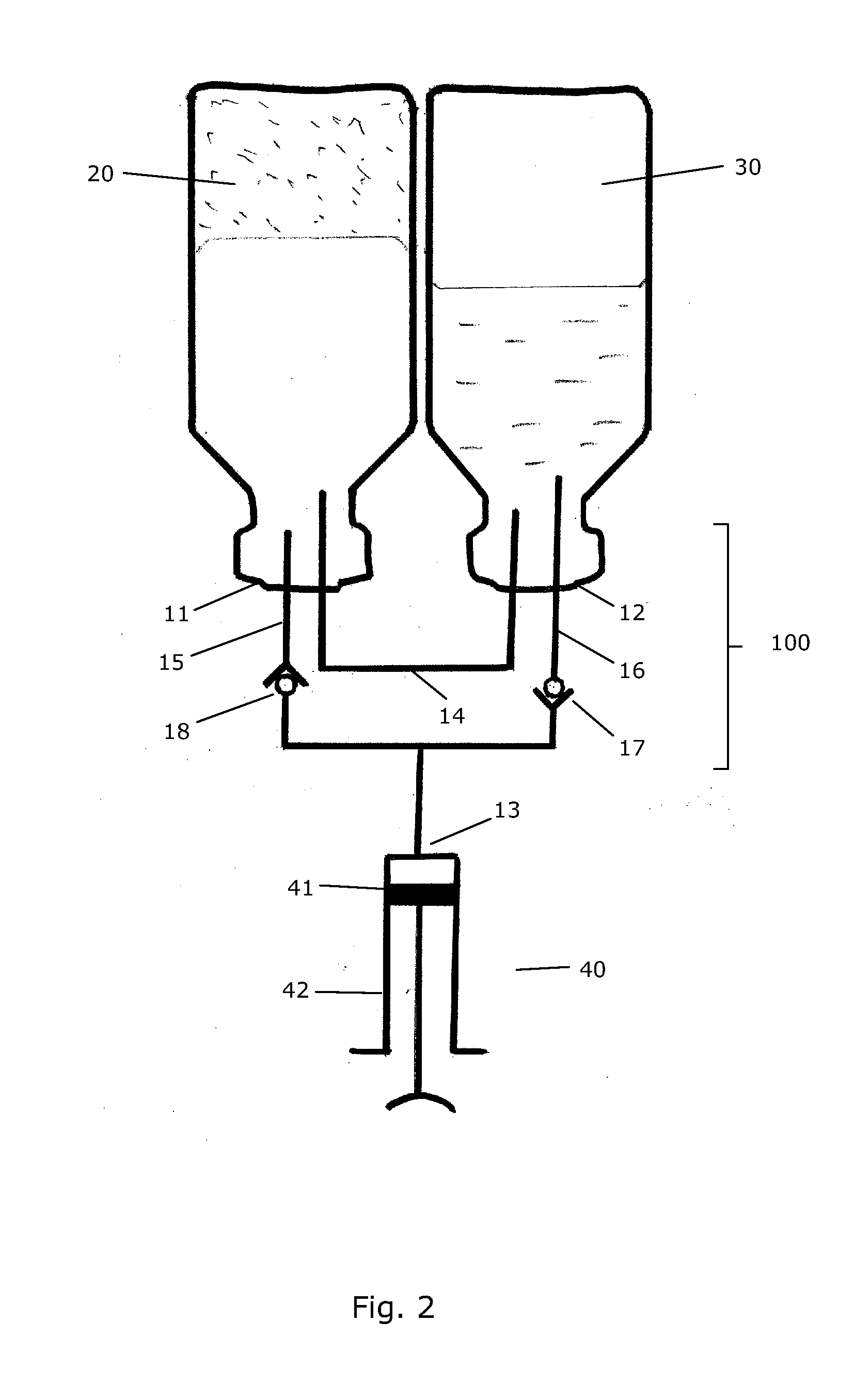Transfer System for Forming a Drug Solution from a Lyophilized Drug
a technology of lyophilized drugs and transfer systems, which is applied in the direction of pharmaceutical containers, packaging foodstuffs, packaged goods types, etc., can solve the problems of compromising the precise concentration level of administered drugs, compromising sterility, and difficult to obtain exact volume of diluent to drug ratio,
- Summary
- Abstract
- Description
- Claims
- Application Information
AI Technical Summary
Benefits of technology
Problems solved by technology
Method used
Image
Examples
second embodiment
[0118]FIG. 2 is a schematic view of a transfer system 100 according to the invention. The embodiment of FIG. 2 is very similar to the embodiment of FIG. 1, and the fundamental operation of the transfer system 100 will therefore not be described in further detail here.
[0119]In FIG. 2 the second flow control member 18 is an ordinary check valve which is operated by a difference in pressure at the first port 11 and at the third port 13. Accordingly, when the piston 41 of the syringe 40 is pulled back, the second control member 18 will open, and reconstituted drug is transferred from the first container 20 to the syringe 40.
third embodiment
[0120]FIG. 3 is a schematic view of a transfer system 100 according to the invention. The parts of the transfer system 100 of FIG. 3 which are identical to parts which have previously been described with reference to the preceding Figures will not be described in further detail here.
[0121]The transfer system 100 of FIG. 3 may be operated in the following manner. When it is desired to mix the contents of the first container 20 and the contents of the second container 30, it is first ensured that the second flow control member 18 is closed. Then the piston 41 of the syringe 40 is pulled back. This will cause check valve 17 to open while check valve 21 remains closed. Accordingly, liquid is sucked out of the second container 30 and into the syringe 40 via the third channel 16. Furthermore, ambient air is sucked into the second container 30 via filter 22. The check valve 21 ensures that air or material is not sucked from the first container 20 into the syringe 40 during this operation. ...
fourth embodiment
[0124]FIG. 4 is a schematic view of a transfer system 100 according to the invention. The parts of the transfer system 100 of FIG. 4 which are identical to parts which have previously been described with reference to the preceding Figures will not be described in further detail here.
[0125]The transfer system 100 of FIG. 4 may be operated in the following manner. When it is desired to mix the contents of the first container 20 and the contents of the second container 30, air is initially sucked into the syringe 40 by pulling the piston 41 back, and the syringe 40 is then coupled to the third port 13. Then the piston 41 is pushed forward. This causes check valve 17, 18 to open, and air is transferred from the syringe 40 into the second container 30 via channel 16, thereby increasing the pressure in the second container 30. The increased pressure in the second container 30 causes the second contents to be transferred from the second container 30 to the first container 20, via the first...
PUM
 Login to View More
Login to View More Abstract
Description
Claims
Application Information
 Login to View More
Login to View More - R&D
- Intellectual Property
- Life Sciences
- Materials
- Tech Scout
- Unparalleled Data Quality
- Higher Quality Content
- 60% Fewer Hallucinations
Browse by: Latest US Patents, China's latest patents, Technical Efficacy Thesaurus, Application Domain, Technology Topic, Popular Technical Reports.
© 2025 PatSnap. All rights reserved.Legal|Privacy policy|Modern Slavery Act Transparency Statement|Sitemap|About US| Contact US: help@patsnap.com



